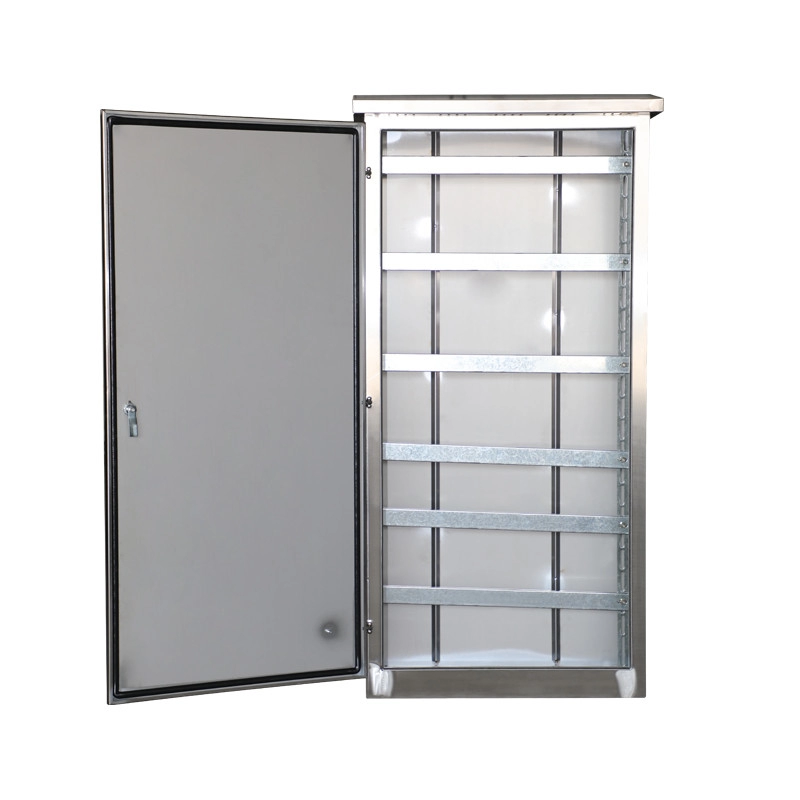
Ever struggled with enclosures that don’t fit specialized equipment? Standard boxes often lack proper ventilation or mounting points. This forces engineers to compromise functionality. Custom sheet metal enclosures solve this by adapting to unique technical requirements.
Industrial environments demand precision fabrication. Think chemical plants needing corrosion-resistant stainless steel or telecom gear requiring specific EMI shielding. Off-the-shelf solutions rarely meet these specialized needs effectively.
Customization starts with CAD-driven designs. Manufacturers translate specs into enclosures with exact cutouts, bends, and weld points. For example, one robotics project required 0.1mm tolerance laser cutting for sensor integration – impossible with standard options.
Material flexibility matters too. Aluminum enclosures work for lightweight needs, while galvanized steel suits harsh environments. Custom sheet metal enclosures offer this versatility inherently.
Our team encountered EMI interference issues in 2025 while developing MRI-compatible control units. Standard enclosures caused signal distortion affecting image quality. The solution? Custom Faraday cage-style enclosures with copper-nickel alloy gaskets.
Results showed 92% EMI reduction (Journal of Medical Engineering, 2025). This demonstrates how bespoke metal housing solves niche technical challenges.
| Feature | Standard Enclosures | Custom Sheet Metal Enclosures |
|---|---|---|
| Lead Time | 1-3 days shipment | 2-5 week fabrication |
| Cost Efficiency | Low upfront cost | 15-30% lower lifetime cost |
| IP Rating | Limited options | IP65-IP68 achievable |
| Modification Flexibility | Rigid design | Future-proof with add-on panels |
Step 1: Document technical specs – dimensions, thermal loads, ingress protection needs. Pro tip: Include connector locations!
Step 2: Choose materials wisely. Aluminum for heat dissipation? Stainless steel for food processing? Consider environmental factors.
Step 3: Request DFM analysis. Reputable manufacturers like GD Weiting provide design-for-manufacturability feedback to reduce costs.
Step 4: Validate prototypes. Test fit, thermal performance, and accessibility before full production. Fixing design flaws now saves thousands later.
Step 5: Implement kitting solutions. Combine enclosures with pre-installed components to slash assembly time by 40% (Industrial Automation Report, 2024).
Warning: Underestimating thermal management causes 23% of electronics failures in industrial settings. Always calculate heat dissipation needs and incorporate vents or fans.
Warning: Ignoring tooling clearance leads to deformed panels. Remember: bending machines need 4x material thickness clearance for clean edges.
✓ Verified CAD model dimensions
✓ Confirmed material grade compatibility
✓ Assessed corrosion protection needs
✓ Validated IP rating test plans
✓ Scheduled prototype stress tests
Q: How long does custom fabrication take?
A: Typically 3-6 weeks depending on complexity. Prototyping adds 1-2 weeks but prevents costly mass-production errors.
Q: Are powder-coated finishes durable?
A: Absolutely! Modern coatings withstand 1,000+ salt spray hours. For extreme environments, consider anodized finishes though.
Q: Can existing designs be modified?
A: Yes! Most manufacturers offer revision services. Retrofitting existing custom sheet metal enclosures is often 60% cheaper than new tooling.